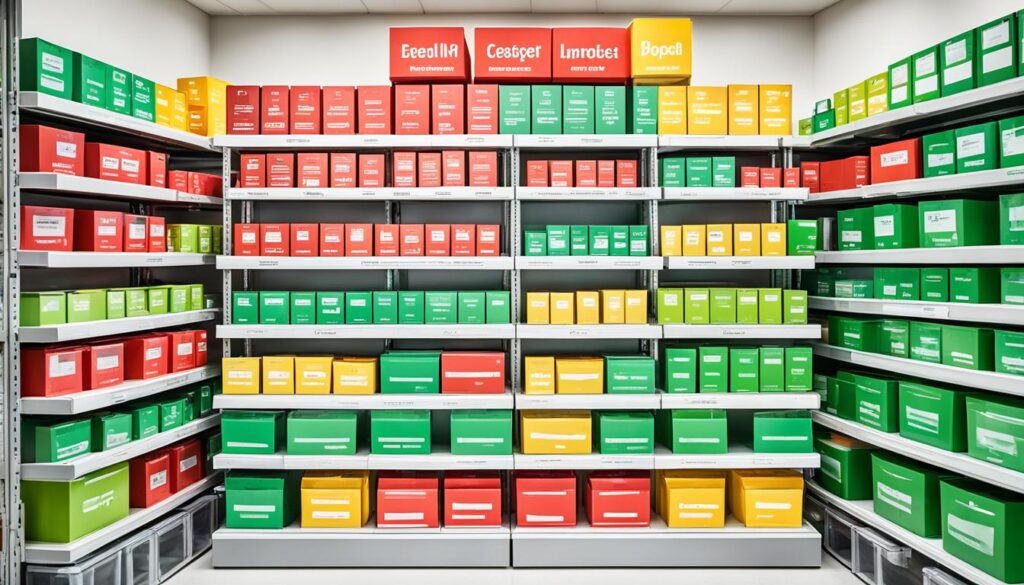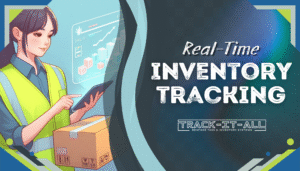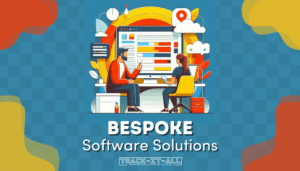In today’s retail world, having a good inventory management system is key for SMEs to thrive and grow. It’s vital to know when to order more stock, understand the costs of storing items that don’t sell fast, and keep track of how well products are doing. These are no longer things you can guess at.
Old ways like using spreadsheets often lead to mistakes and can’t handle business growth. That’s why companies like Track It All are moving to special inventory management software. This tech grows with your business and works well with other cloud apps. It gives you a full, mistake-free system that keeps all important info easy to find. This makes running your business and making decisions much better.
Choosing the right inventory software can really make a difference in how well your business runs. For example, Zoho Inventory starts at $59 a month if you pay yearly. On the other hand, Sortly offers free versions and trials, so it’s good for businesses with different budgets.
Key Takeaways
- Effective inventory management is crucial for business growth and efficiency.
- Software solutions like Zoho Inventory and Sortly offer diverse pricing plans and free trials.
- Systems like Track It All streamline operations and reduce errors.
- Zoho is recognised as the best overall inventory management software.
- Automated and cloud-based systems provide real-time data and enhance decision-making processes.
Why SMEs Need Inventory Management Software
For small and medium enterprises (SMEs), keeping track of inventory is key to smooth operations. Manual methods often waste time, lead to mistakes, and limit growth. To overcome these issues, advanced inventory control software is essential for efficiency and accuracy.

Challenges in Manual Inventory Management
Manual inventory management faces several hurdles:
- Time Consumption: Tracking stock manually takes a lot of time, taking away from other important tasks.
- Susceptibility to Errors: Mistakes in manual entries can lead to wrong stock levels and order problems.
- Inability to Scale: As businesses grow, manual systems become too hard to manage, limiting expansion.
- Lack of Integration: Manual systems don’t easily work with other important systems like accounting or POS software, causing outdated data and poor performance overview.
Benefits of Inventory Management Software
Using inventory tracking software offers many benefits:
- Real-Time Data Updates: Software updates stock levels instantly, reducing the risk of overstock or stockouts.
- Automation: Automated tasks like stock updates, tax calculations, and invoice generation reduce errors and save time.
- Cloud-Based Integration: Cloud-based systems help synchronize stock across different locations.
- Data Analytics: Advanced systems provide insights into market trends, helping businesses improve stock levels and meet demand.
- Cost Savings: Small businesses can cut excess stock by about 20%, leading to big cost savings and a 35% drop in inventory costs.
- Improved Customer Satisfaction: Good inventory management means timely delivery, better customer experience, and more repeat business.
- Operational Efficiency: Businesses using inventory software can become up to 50% more efficient.
- Order Fulfillment: Companies with this software see a 30% boost in order fulfillment accuracy and speed.
Choosing the right inventory management software is key for SMEs wanting to improve their inventory control and streamline operations. This choice helps businesses manage their inventory better, leading to better management, more profit, and steady growth.
Top Inventory Management Software for SMEs
For SMEs in South Africa, picking the right inventory management tools is key. We look at three top inventory management solutions. They cater to different business needs, from manufacturing to e-commerce. Each has unique features to boost your business’s efficiency.
Zoho Inventory
Zoho Inventory is great for managing many channels and warehouses. It suits growing businesses well. You can choose from free to $249 per month plans, billed yearly, depending on your business size and needs. The free plan has limits on orders, shipping labels, and AfterShip tracking to 50.
We suggest checking out Zoho Inventory for its real-time stock updates and automated reordering.
Lightspeed
Lightspeed is a top choice for retail businesses. It combines POS and inventory systems. It’s perfect for SMEs wanting to track inventory across online and physical sales.
It might not be the cheapest, but its efficiency in managing inventory is worth it for retail businesses seeking precision and ease.
Square
Square is known for its easy-to-use interface and a free plan for new and small businesses. It has great inventory management features like batch order tracking and automatic reordering. These are great for small businesses looking to grow.
We think Square’s affordability and simplicity make it a great choice for SMEs starting with inventory management.
| Software | Free Version | Paid Plan (Monthly) |
|---|---|---|
| Zoho Inventory | Yes | $29-$249 |
| Lightspeed | No | Custom Pricing |
| Square | Yes | Free (Basic); Custom (Advanced) |
Choosing the right inventory management tools can greatly improve your business’s efficiency. Solutions like Zoho Inventory, Lightspeed, and Square have strong features for different business needs. For more help in picking the right inventory management solution for you, check out this detailed guide.
Inventory Management Software for Small Businesses
For small businesses, it’s key to use a smart inventory management system. As they grow, old methods like spreadsheets don’t cut it. They lead to big problems.
Benefits of Cloud-Based Inventory Management
Using cloud-based inventory software lets you check on your stock anytime, anywhere. This is great for growing businesses that need to work on the go. For example, Xero makes it easier for small businesses to grow. It gives you real-time data and works well with other systems.

Managing Inventory Across Multiple Channels
Small businesses often handle stock for different sales channels, like shops and online stores. Track It All makes this easier by letting companies manage stock from one place. Software like SalesBinder helps manage stock across many places. This keeps stock levels the same everywhere and cuts down on mistakes.
| Software | Best for | Starting Price |
|---|---|---|
| Zoho Inventory | Free Inventory Management | $39/month |
| Square | Small Retail Shops | $0 (custom pricing options) |
| Lightspeed | High-Volume Retail | $109/month |
| Sortly | Mobile Tracking | $0 (custom pricing options) |
Automation and Real-Time Data
An inventory management system for SMEs automates tasks and cuts down on mistakes. It gives you real-time data for better decisions. This is key for keeping the right stock levels and guessing demand.
Systems like SOS Inventory have features like automated orders and reports. They work with accounting tools like QuickBooks Online. These tools make managing your stock easy and give you a full view of your inventory.
Conclusion
Choosing the right inventory management software is key for small businesses to grow and work better. The right software helps by automating tasks, making things more accurate, and giving real-time data. This saves time and cuts costs by finding slow-moving items and managing stock better. Order management benefits include streamlining the purchasing process, reducing excess inventory, and improving customer satisfaction by ensuring products are always in stock. With the right software, small businesses can also easily track orders, manage suppliers, and forecast demand accurately. Overall, investing in the right inventory management software can greatly improve efficiency and profitability for small businesses.
Features like analytical tools and forecasting help small businesses make smart choices. Zoho Inventory, Lightspeed, and Square are great options for today’s merchants. They offer solutions that fit the needs of businesses in South Africa, with real-time tracking and updates.
Using inventory management software changes how businesses manage stock, improves cash flow, and makes customers happier. With barcoding and scanning, tracking becomes precise and processes smoother. This software helps small businesses tackle market challenges and grow. So, using these powerful tools is a big step towards success for SMEs.







